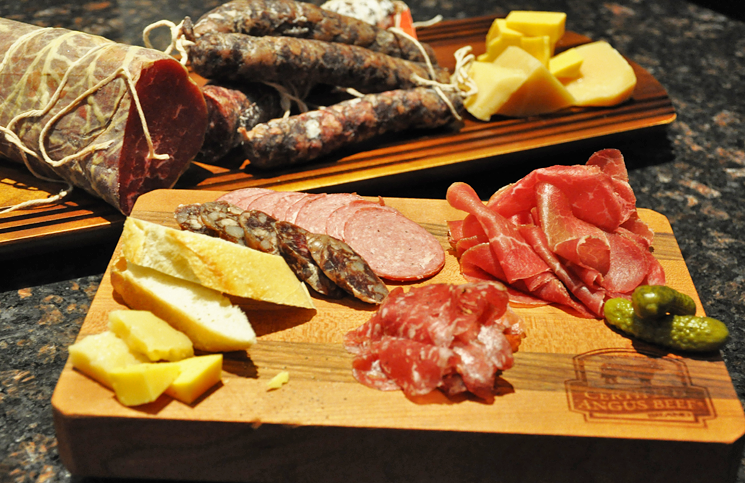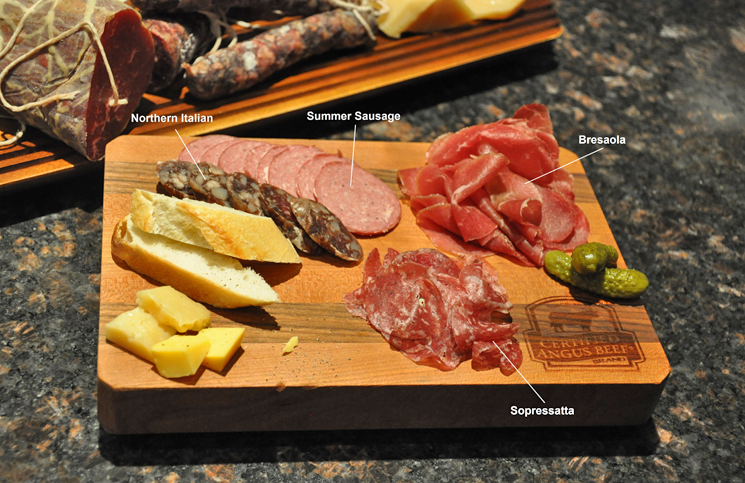The charcuterie tray is to the holiday dinner what an opening act is for concert goers. It invigorates its audience and satisfies their cravings, but it’s often quickly forgotten when the main meal takes the stage … err table. In musical terms, consider it the Spacehog to the entrée’s Paul Simon. But it doesn’t have to be that way.
When executed properly, a charcuterie board can be every bit as interesting, delicious and memorable as any entrée your kitchen can churn out. For centuries, the practice of making preserved meats (typically pork) that have been salted, cooked, smoked and dried, has been equal parts artistry and taste. When complemented with breads, cheeses and an assortment of other accompaniments, the results could be otherworldly.
In more recent times, however, we’ve simplified charcuterie as just a “meat and cheese” tray, with simple store-bought sausages and commonplace cheeses replacing the hand-crafted, intentionally paired layers of flavor.
But nothing would make our experts — like chefs Tony Biggs and Ashley Pado, and meat scientist Dr. Phil Bass, happier than for our society to adopt the charcuterie of yesteryear — back when the most popular man in any neighborhood was the sausage maker. His craft was enjoyed by folks young and old.
Our experts have even gone so far as to make beef-centric renditions of age-old charcuterie classics, like these:
Sopressatta: Southern Italian, often cured with hot pepper and sliced thinly. Becoming a popular alternative to pepperoni. Similar to classic salami.
Bresaola: Often viewed as the “beef prosciutto.” Lean beef seasoned with salt and spices that often include juniper berries, rosemary and citrus notes. Bresaola can also be marinated in a red wine.
Summer Sausage: A fermented and cooked treat with a touch of acid tang. Summer sausage will often have a pepper and garlic aroma, and is often smoked to obtain a precise balance of flavors.
Northern Italian: Dr. Phil’s family recipe, made with allspice, cinnamon, cloves and nutmeg.
Get your hands on some of these classics by visiting your local butcher, or, if you like to travel, visit our good friend Chef Craig Deihl, who is a master of charcuterie in the basement of his Charleston-based restaurant, Cypress. He also lets you into his world on his blog, The Real Deihl Chef. Cleveland-based renowned food writer Michael Ruhlman has also penned a do-it-yourself charcuterie book as well, dubbed simply Charcuterie. But a true charcuterie board is more than just meat, and our own Chef Tony has prepared these treasures on four different continents during his career.
Chef Tony’s Tips for the Perfect Charcuterie Board:
Meats: Hard sausages, like chorizo, or whole cuts like Bresaola. Also, include smoked sausages, like linguica.
Cheeses: Try an English cheddar or Cotswold.
Breads: Any variety of artisan bread.
Others: For Chef Tony, no charcuterie board is complete without a brown mustard sauce and cornichon pickles.
Pairings: No charcuterie board is complete without your favorite wine.
So there you have it. This holiday season, while your thoughts will surely be centered around the headlining roast, make sure to give ample time planning the opener. Who knows, it may become the star of the show!


